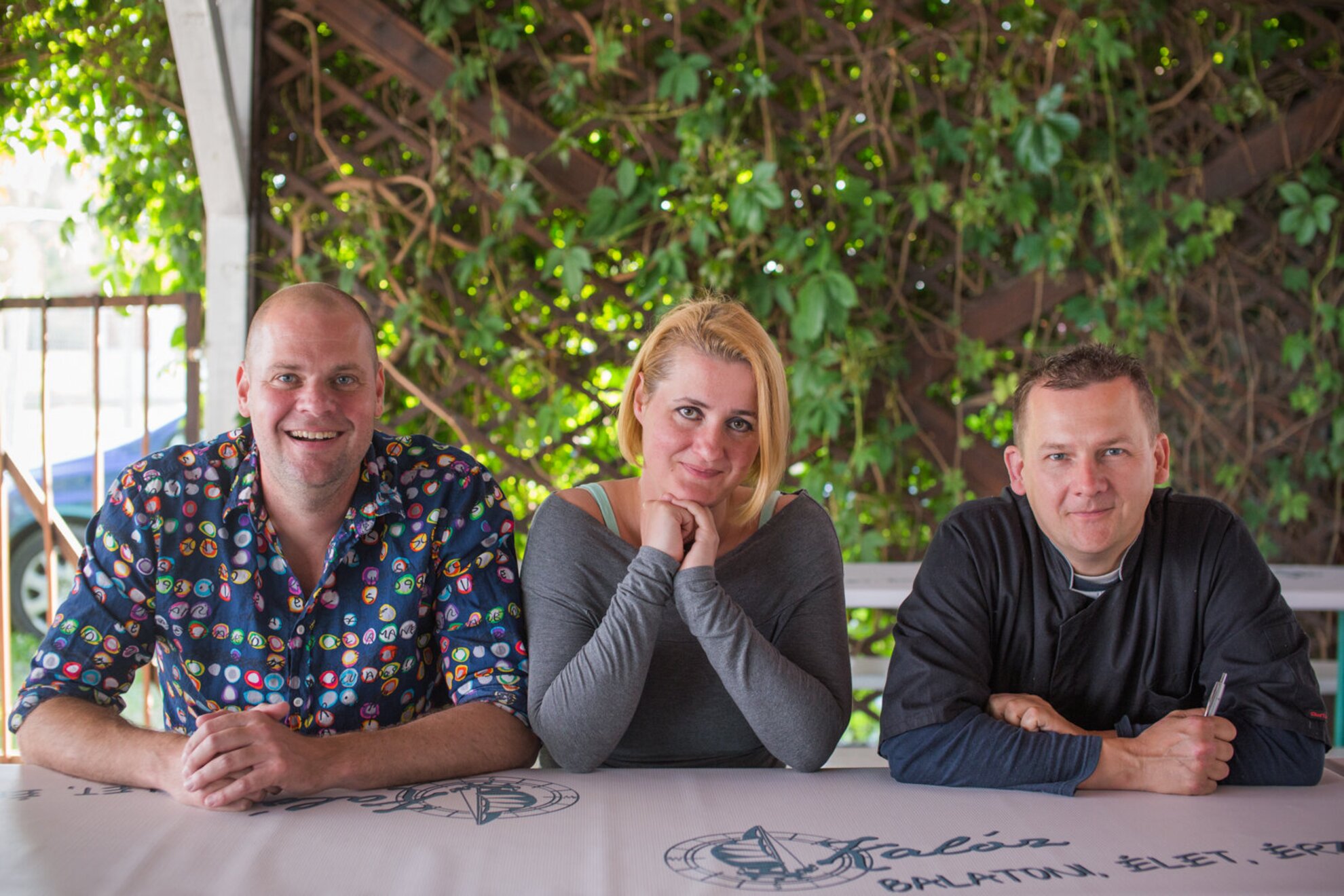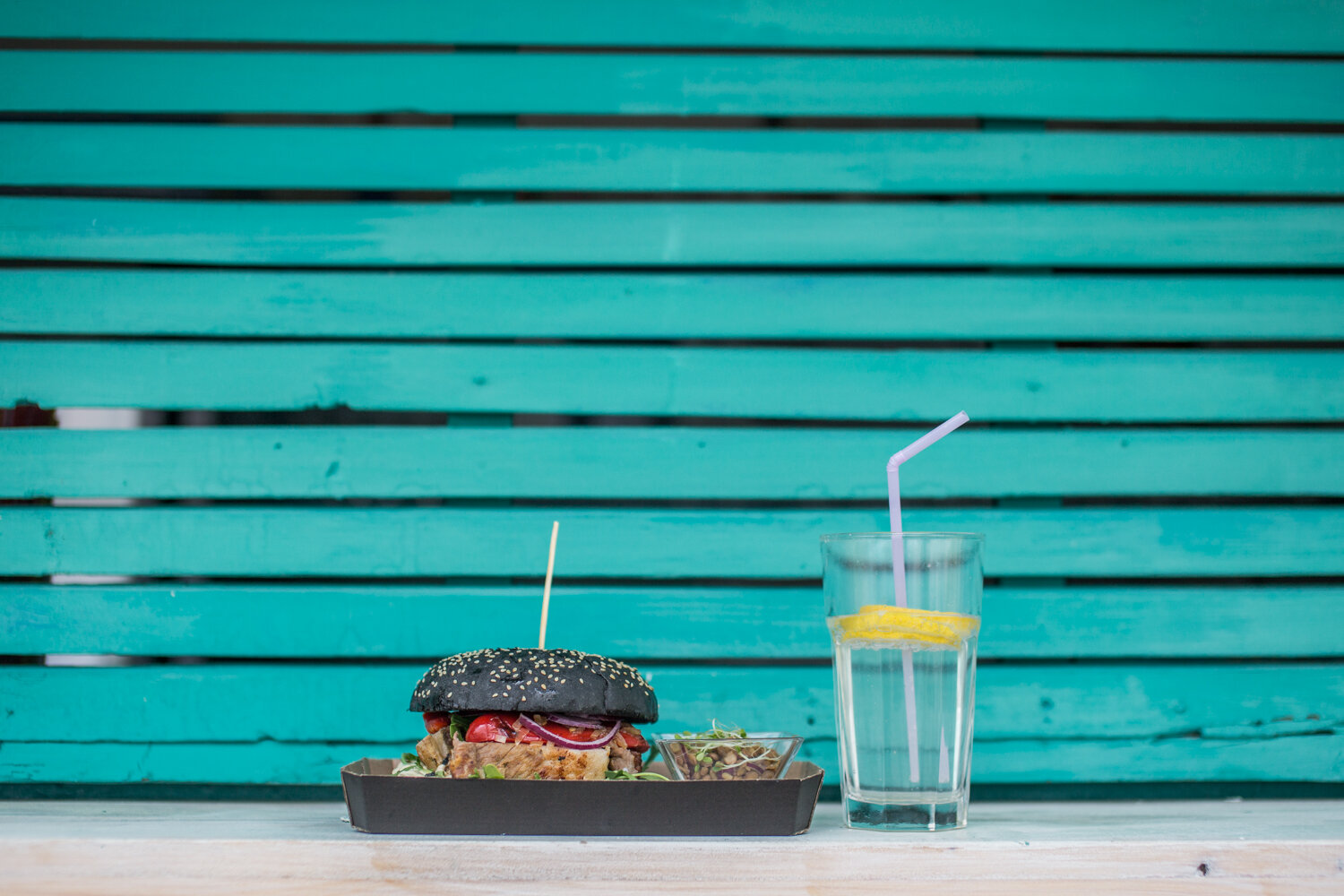How does catfish stew end up in a bun? And really, who decides to paint a burger black? Kalóz, the beach food revolutionist of Balatonudvari-Fövenyes and Badacsonytomaj, renews itself once again: their new chef, Bálint Kocsis brought meals with him, meals that we absolutely wouldn’t expect to see on the beach.
They called it black hole and black widow among themselves, but decided to name it black sails: there’s a good chance that this is going to be the most shocking and most spectacular burger of the summer. The goth-looking black bun that could easily pass as a prop in a Tim Burton movie was colored with sepia ink, and it’s filled with spare ribs fillet. “I can’t keep my eyes off it,” says Nikoletta Nagy-Golyán, the hostess of Kalóz, even though she already saw a lot of it since the new creative chef, Bálint Kocsis crated it.
Originally Bálint was supposed the shake up the menu a bit, but he became so enthusiastic that new ideas kept coming, and so they agreed that he’ll postpone his plans to open his own restaurant and will join the crew of Kalóz. This is how the selection now includes the basil raspberry soup (990 HUF), the pork thin flank with ramsons and tomato-buckwheat risotto (2,190 HUF), the saffron carrot soup with herbed catfish dumpling (990 HUF), or the chocolate bumm (990 HUF) that reminds of an old and popular dessert, the biscuit roll. They also have such family classics (with a clever twist, of course) as the pork and sauerkraut stew (1,690 HUF), or the noodles with egg and goat cheese, sprinkled with fried bacon (1,790 HUF).
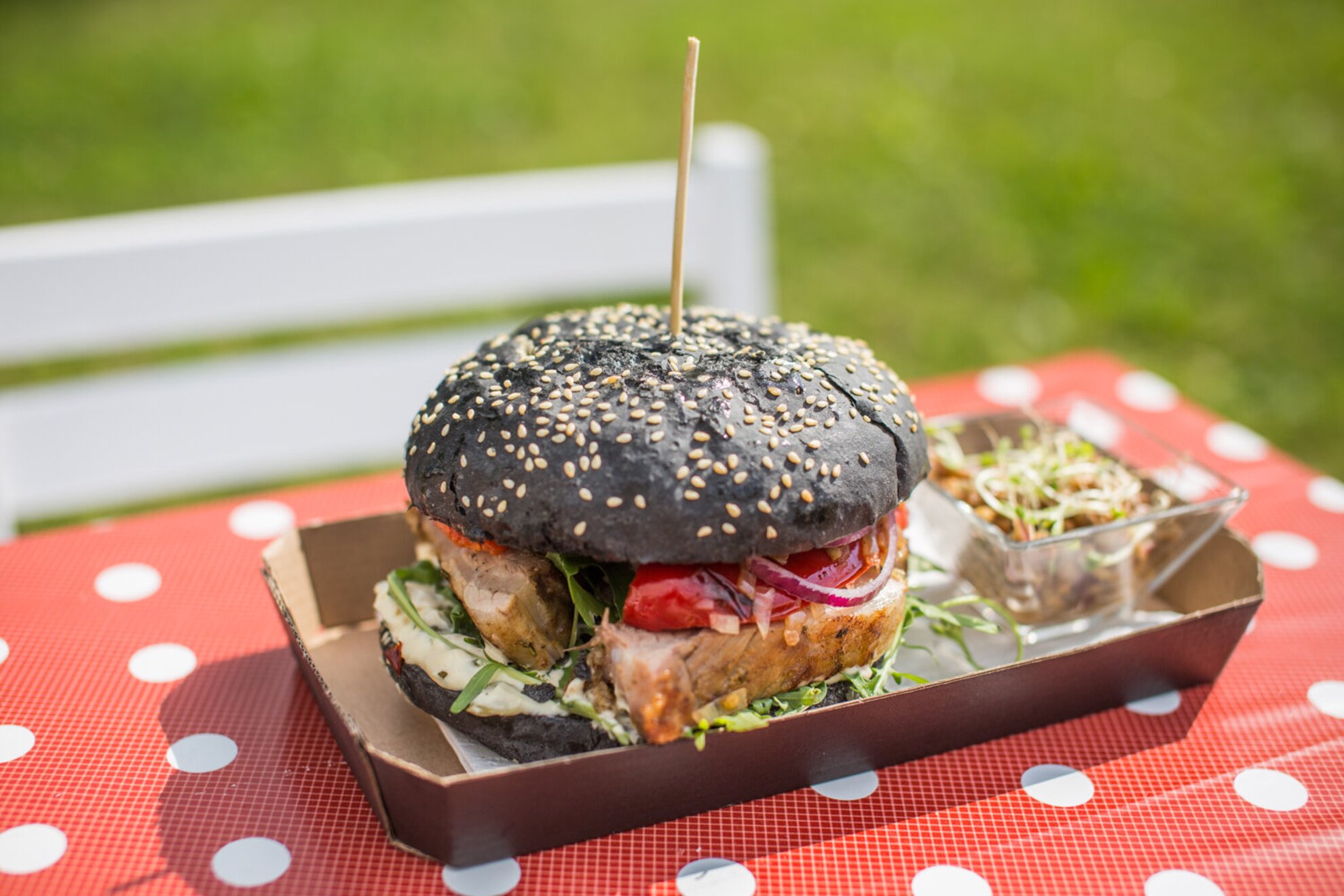
Squash pottage as beach food
“We will serve comprehensible, ordinary, almost homely meals that you were used to having at home. We don’t use any ingredients that are alien here.” Herbs are his obsession: “amazing things can happen once we leave the holy trinity of onion, paprika, and cumin behind. I like Hungarian cuisine, but I use a lot more mint, basil, and lemongrass than cumin.” And then there are grains as sides: buckwheat, millet, and bulgur, so that “it isn't only rice and French fries.”
Niki is all about turning traditional, clean Hungarian meals – like squash pottage – into healthy and summery beach food. “We don’t want to be an inn or a tavern,” she says. “There’s no restaurant in Balatonudvari-Fövenyes, we are the restaurant in the evenings, and the older audience is looking for traditional flavors. We don’t want to lose half of our guests just because one age group finds what they’re looking for while the other doesn’t. It’s exciting to sell catfish stew for someone who’s young. Maybe they wouldn’t taste it by itself, but they do when it’s in a burger.”
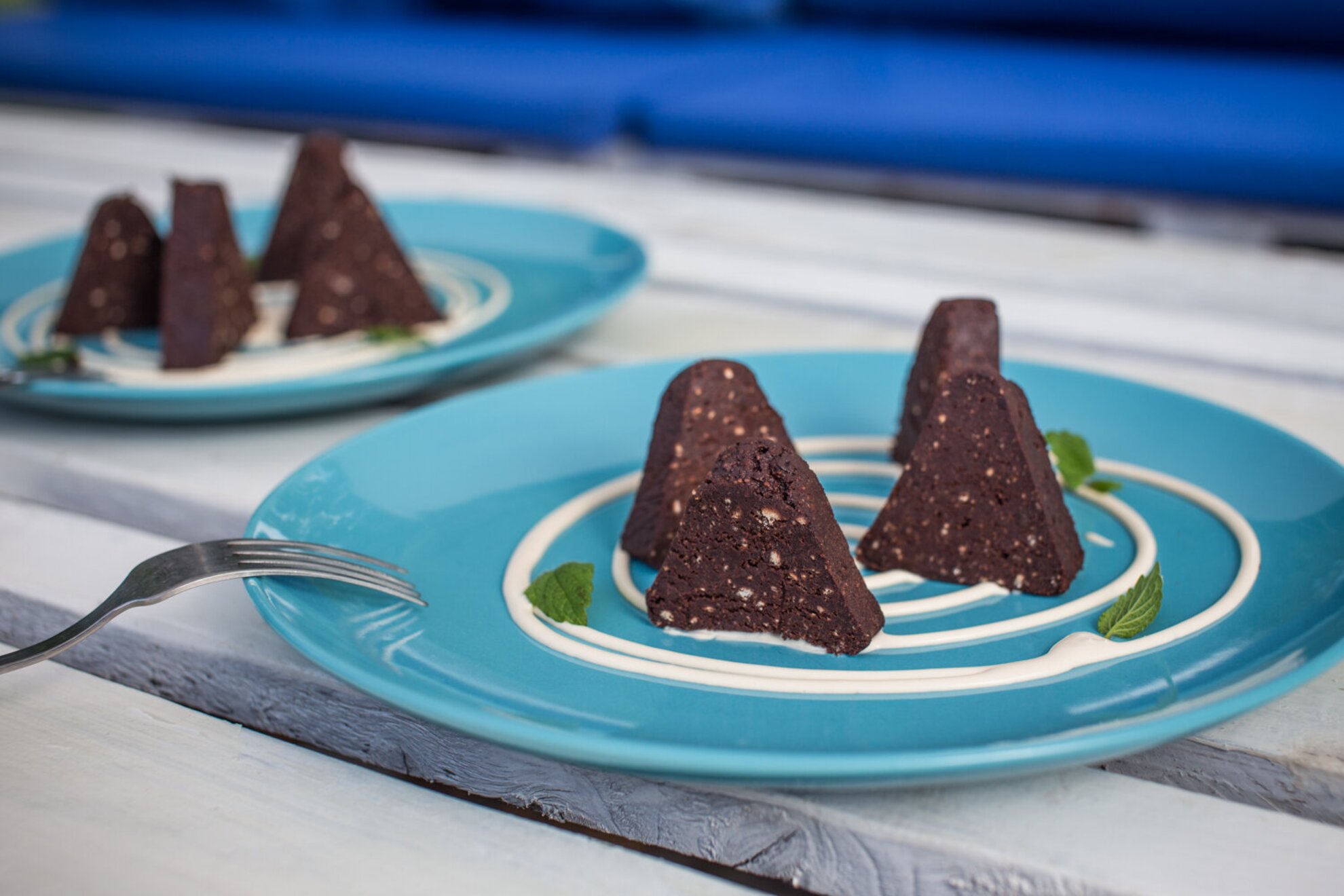
According to Bálint, a burger can house more than just ketchup and meat: the gourmet burger has goat cheese, baked pear, and red onion chutney with plum and balsamic vinegar. “I pass a Balaton buffet and I hear the guns – the closing of the microwave ovens. It would be very simple and cheap to order the meat patty, it would be very simple to have salmon, to force the red tuna steaks, as they are trendy, but who cares? I continuously hear the whispering of the reeds – why would I want salmon here?”
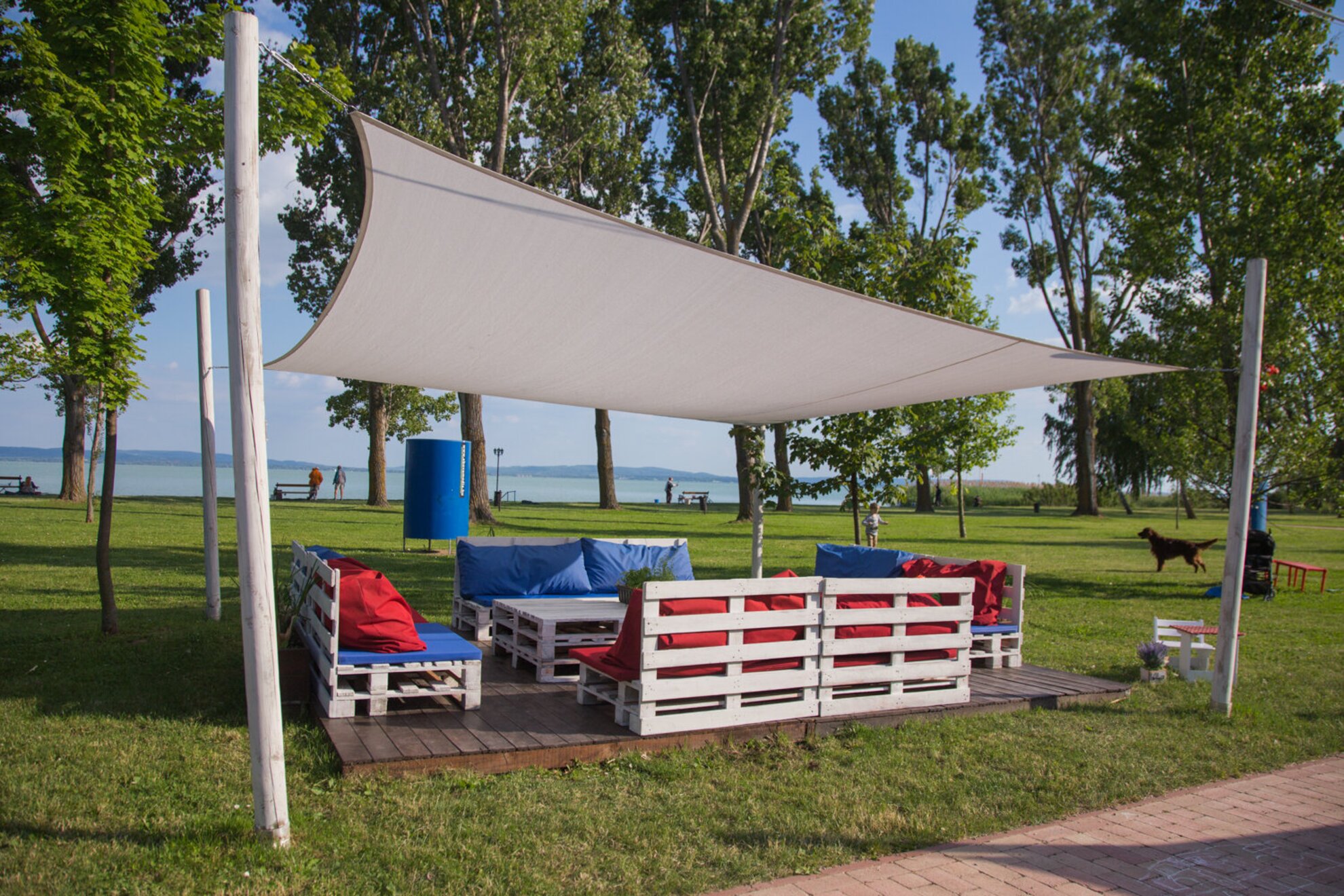
From hake to catfish
The beach food revolution of Fövenyes started out a few years ago by replacing the hake with catfish, and the lángos with pie. “It was the summer of 2014 when we felt like there’s no other way: we either take a deep breath and try to do what we always wanted to do or we sell it all,” recalls Niki. “We thought that what we’re doing now is much more needed.” They had a traditional beach buffet before, if by traditional we mean the hake and lángos duo, however, it wasn’t exactly traditional in the sense that they learned how to make these by the famous master chef, Lajos Bíró. “I really wanted do provide good quality, even if it’s hake or lángos.”
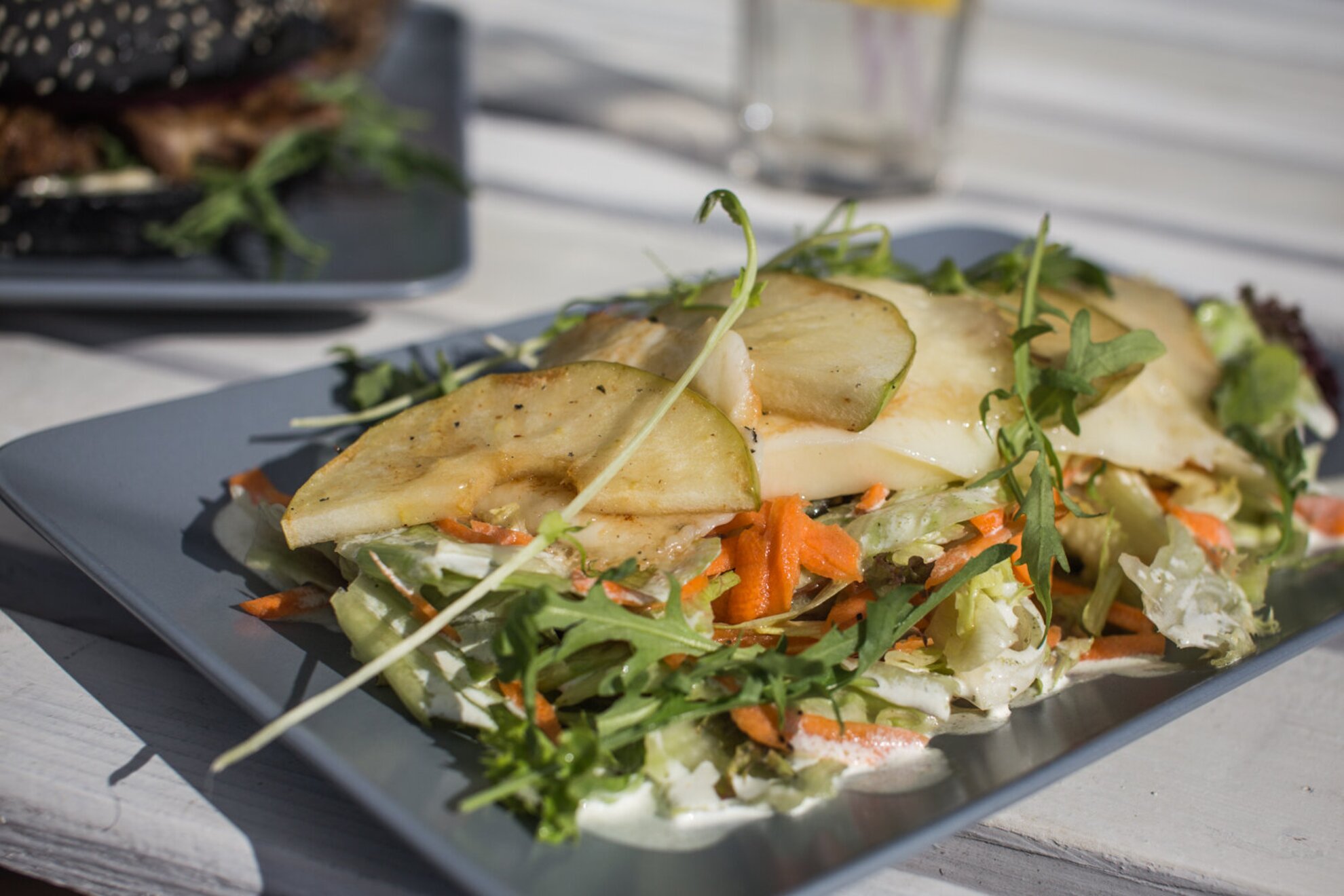
She went to Lajos Bíró, who cooked and showed everything to her, gave the recipes to her, and advised hernot to differ from them. That was in 2009, the town probably didn’t even have a Michelin-star back then. “Beach-gastronomy is an extreme sport, the old reflexes work. The hardest thing to achieve when you’re a groundbreaker, is to make the guests have their expectations. Here, in Fövenyes, it came naturally, but when we opened our spot in Badacsonytomaj last year, we realized just how much people are used to the trinity of lángos, pancakes, and hake, and they are even willing to stand in a 120 meters long line for it.
Selling a frozen burger for 750 forints is a robbery
Attila Nagy, Niki’s husband has something to add as well: “The meat is from Pörc in Balatonkenese, the bun is from Kisapáti’s Búzalelke, Bálint Kocsis is behind the counter, and people say that the burger is expensive. (1,990-2,190 HUF) It’s not robbery. Robbery is when the frozen burger, that costs 150 forints, is sold for 750 forints. That’s robbery!”
